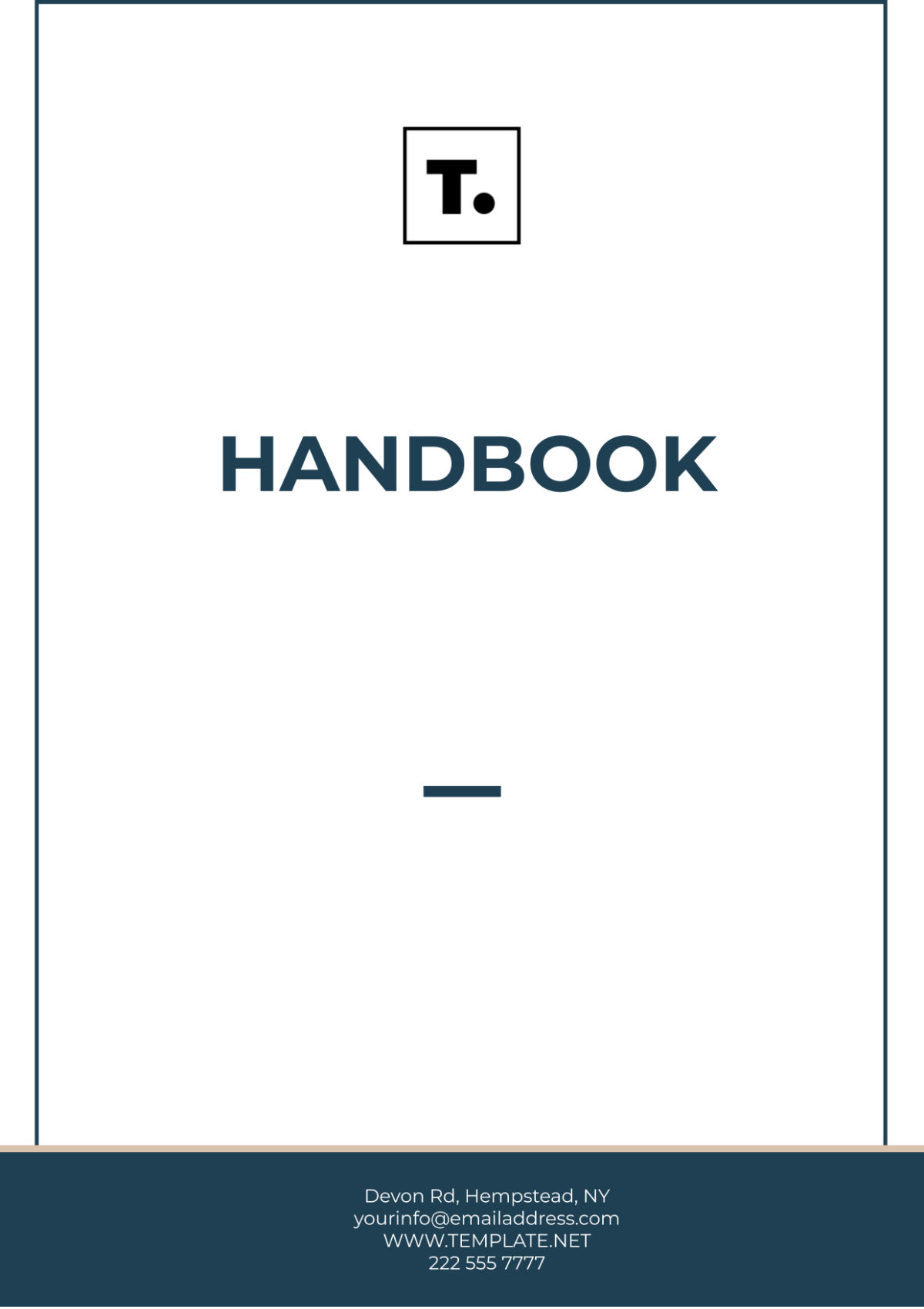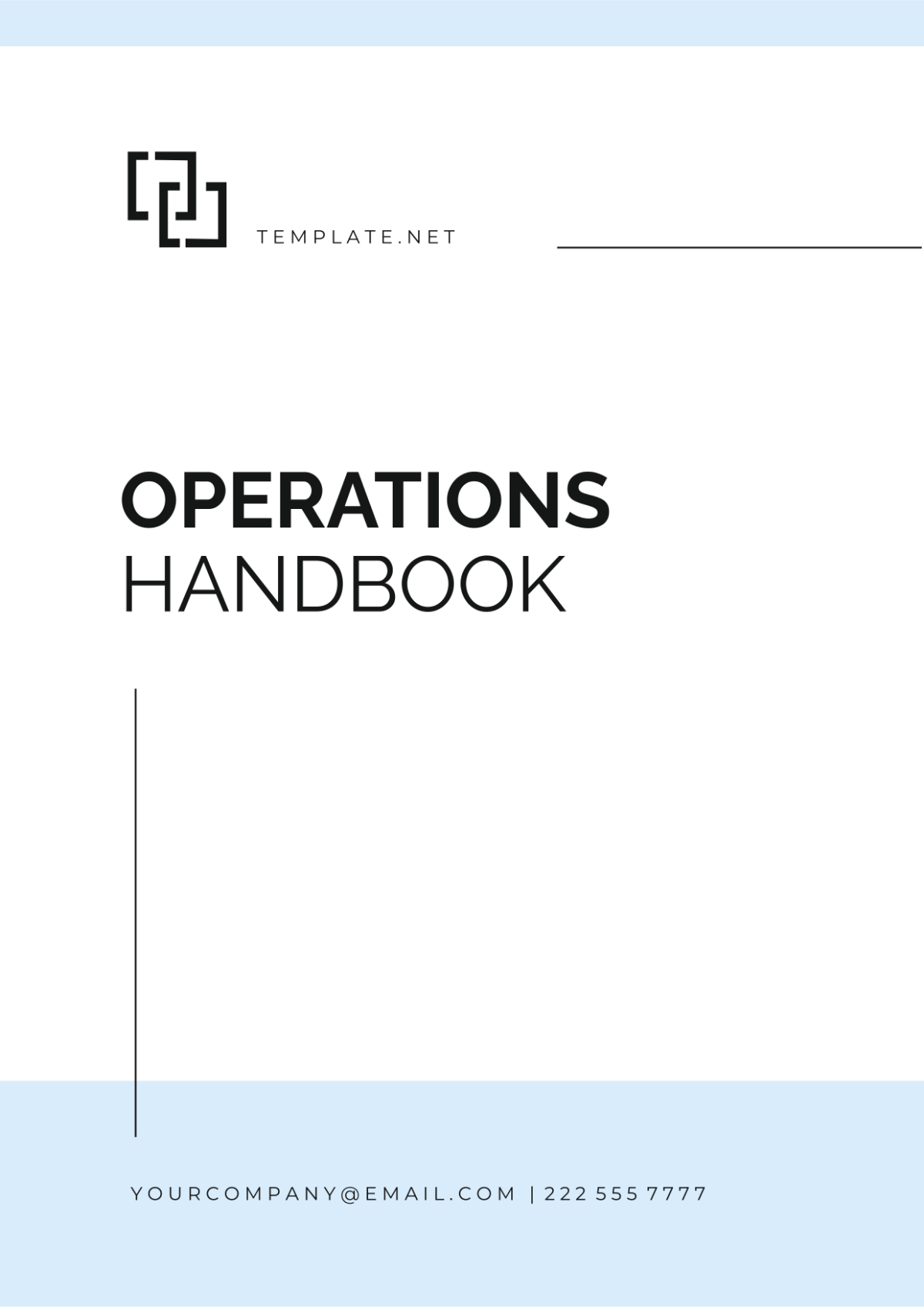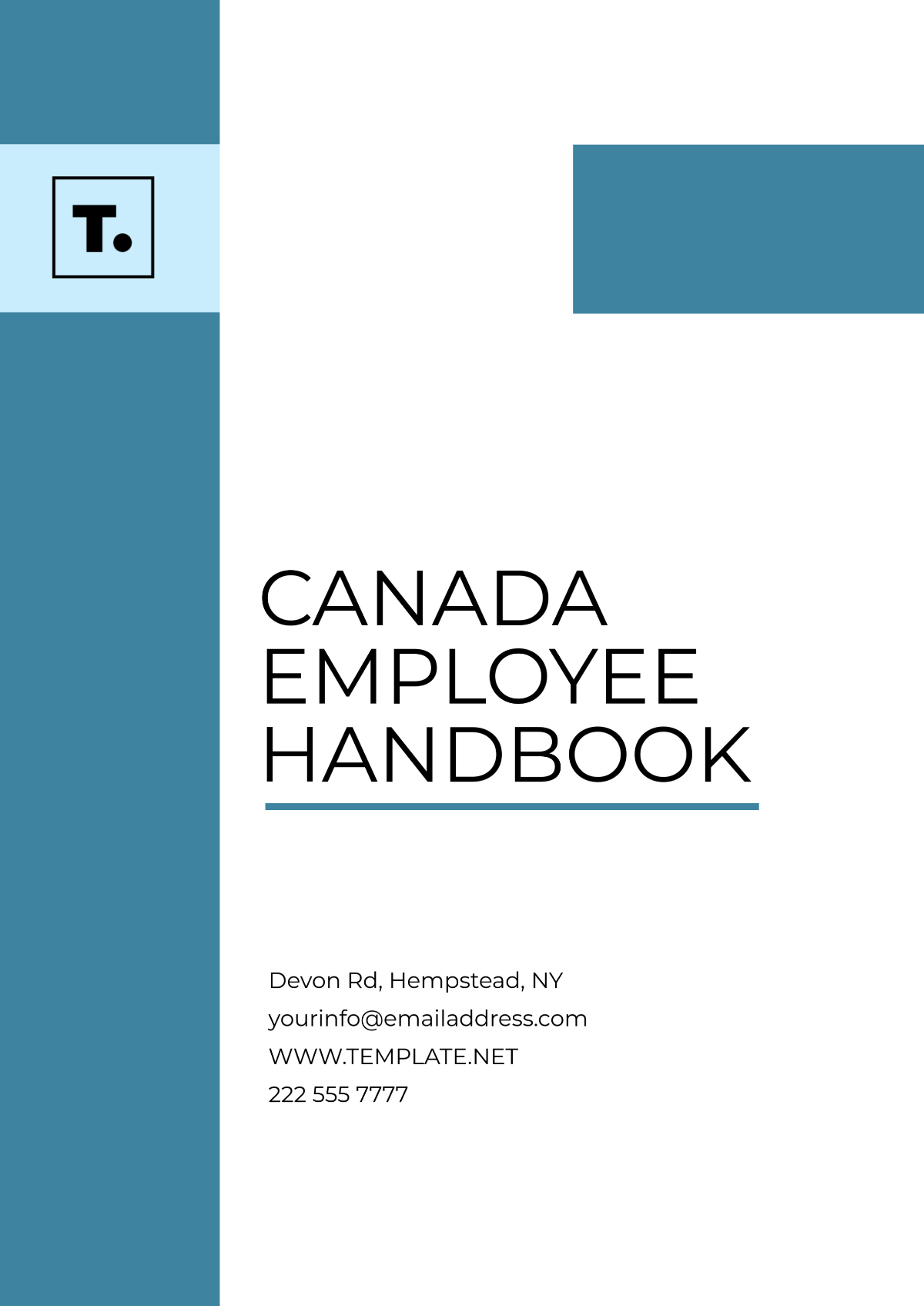Severance and Termination Benefits Handbook
Introduction
Welcome to [Your Company Name]'s Severance and Termination Benefits Handbook. This handbook is designed to provide comprehensive guidance on the processes, policies, and principles governing terminations and severance benefits at our organization. We believe in transparency and fairness in all aspects of employment, including the difficult process of termination.
Purpose of the Handbook
The primary purpose of this handbook is to outline the company's policies and procedures related to severance and termination benefits. It serves as a valuable resource for both employees and the company itself by:
Informing Employees: This handbook is intended to inform employees about the policies and procedures that govern terminations, severance benefits, and related matters. It offers clear, concise information to help employees understand their rights, obligations, and options in the event of termination.
Ensuring Consistency: By documenting our company's approach to terminations and severance benefits, we aim to maintain consistency and fairness in our practices. We believe that all employees should be treated equitably and ethically throughout their employment journey, including during times of transition.
Mitigating Risk: Having clear and well-documented policies in place helps mitigate legal and financial risks for both employees and the company. It ensures that we comply with all relevant employment laws and regulations while also fostering an environment of trust and respect.
Supporting Employees: We understand that the experience of termination can be challenging and emotional. This handbook not only outlines the logistical aspects of severance but also provides information about resources available to support employees during and after their transition.
At-Will Employment
At [Your Company Name], we operate under the principle of at-will employment. This means that both the employer and the employee have the right to terminate the employment relationship at any time, for any reason, with or without notice. This fundamental aspect of employment defines the working relationship between the company and its employees and serves as the default employment arrangement unless otherwise specified in a written agreement.
Key points to understand about at-will employment:
Mutual Freedom: At-will employment allows both employees and the company to exercise their freedom to end the employment relationship without the need to establish just cause or provide a specific reason for termination.
No Employment Contract: In an at-will employment arrangement, there is typically no fixed term of employment unless explicitly stated in a contract. This means that employment is ongoing until either party decides to terminate it.
Flexibility: At-will employment offers flexibility to adapt to changing business needs and personal circumstances. It allows for the efficient management of the workforce while respecting the rights of employees.
Legal Framework: At-will employment is subject to federal, state, and local employment laws, which outline the rights and responsibilities of both employers and employees. These laws may define exceptions to at-will employment, as explained below.
Exceptions to At-Will Employment
While at-will employment is the default arrangement in many states, there are important exceptions and limitations to consider:
Employment Contracts: If you have a written employment contract with the company, the terms outlined in the contract will dictate the conditions under which employment can be terminated. Employment contracts may specify a fixed term of employment, reasons for termination, and dispute resolution processes.
Implied Contracts: In some cases, even in the absence of a written employment contract, certain statements or actions by the company (such as promises of job security or specific termination procedures) can create an implied contract. This can restrict the at-will nature of employment.
Public Policy Exceptions: Termination cannot be based on reasons that violate public policy. For example, employees cannot be terminated for refusing to engage in illegal activities or for exercising their legal rights, such as filing a workers' compensation claim or reporting workplace safety violations.
Discrimination and Retaliation Laws: Federal and state laws prohibit employment discrimination and retaliation based on factors such as race, color, religion, gender, sexual orientation, age, disability, and more. Termination for discriminatory or retaliatory reasons is unlawful.
Whistleblower Protections: Employees who report illegal activities, ethical violations, or unsafe practices within the company may be protected by whistleblower laws. Retaliation against whistleblowers is prohibited.
Collective Bargaining Agreements: Unionized employees may be subject to the terms of a collective bargaining agreement that outlines specific procedures and grounds for termination.
Termination Policies
At [Your Company Name], termination of employment is considered a serious step and is undertaken only after careful consideration of the circumstances. Termination may occur for various reasons, but it is essential to ensure that all terminations are carried out in accordance with our commitment to fairness, legality, and ethical conduct. The following are common grounds for termination:
Performance Issues: Substandard job performance, consistently failing to meet job requirements, or not fulfilling assigned duties in a satisfactory manner may be grounds for termination.
Attendance and Punctuality: Repeated and unexcused absences, tardiness, or a pattern of not adhering to the company's attendance policy may lead to termination.
Violation of Company Policies: Failure to adhere to company policies, procedures, and codes of conduct may result in disciplinary actions, including termination. This includes policies related to workplace behavior, safety, ethics, and more.
Misconduct: Serious misconduct, including but not limited to theft, fraud, harassment, discrimination, violence, or substance abuse in the workplace, may lead to immediate termination.
Breach of Confidentiality: Unauthorized disclosure or misuse of confidential company information may be grounds for termination.
Insubordination: Refusal to follow legitimate and reasonable instructions from supervisors or managers can lead to disciplinary action, including termination.
Conflict of Interest: Engaging in activities or relationships that create conflicts of interest without proper disclosure and approval may result in termination.
Violation of Employment Agreements: Failure to abide by the terms and conditions of employment agreements, including non-compete and non-solicitation agreements, can lead to termination.
Lack of Qualifications: If an employee lacks the necessary qualifications or credentials required for their role, it may result in termination if those qualifications are essential for job performance.
Economic Reasons: In cases of business downturns, restructuring, or financial constraints, layoffs or terminations may occur for economic reasons.
Progressive Discipline
At [Your Company Name], we believe in offering employees the opportunity to improve their performance and correct behavior before considering termination. Our progressive discipline process typically involves the following steps:
Verbal Warning: In cases of minor issues, supervisors may issue a verbal warning to the employee, discussing the problem and expectations for improvement.
Written Warning: If the problem persists, a written warning may be issued, clearly outlining the performance or conduct issue, consequences of non-improvement, and a timeframe for improvement.
Probationary Period: In some cases, a probationary period may be established during which the employee's performance and conduct are closely monitored. Failure to meet expectations during this period may lead to termination.
Suspension: For more serious violations, a suspension without pay may be implemented to allow for further investigation and consideration. The duration of the suspension will be determined based on the circumstances.
Termination: If the employee fails to meet the required standards of performance or conduct improvement within the specified timeframe, termination may be considered as a last resort.
Severance Benefits
At [Your Company Name], we offer severance benefits to eligible employees as part of our commitment to supporting them during times of transition. Severance benefits are provided to assist employees in their post-employment journey and may vary based on individual circumstances and our company's policies. The eligibility criteria for severance benefits are as follows:
Eligibility Criteria
Regular Full-Time Employees: To be eligible for severance benefits, an employee must be classified as a regular, full-time employee of [Your Company Name]. Temporary, part-time, and contract employees typically do not qualify for severance benefits unless otherwise specified in their employment agreement.
Length of Service: Eligibility for severance benefits may be determined by the length of service with the company. Typically, employees must have completed a minimum period of continuous employment to be eligible. The specific length of service required will be outlined in the employee's employment agreement or severance policy.
Involuntary Termination: Severance benefits are generally provided to employees who are involuntarily terminated, meaning the termination is initiated by the company and is not the result of voluntary resignation or retirement. The circumstances of the termination (e.g., layoffs, restructuring, position elimination) will be taken into account.
Agreement with Severance Terms: In some cases, eligibility for severance benefits may be contingent upon the employee signing a severance agreement that outlines the terms and conditions of the severance package, including any post-termination obligations and waivers of legal claims.
Severance Calculation Formula
The calculation of severance benefits at [Your Company Name] is based on a formula designed to provide eligible employees with fair and competitive compensation during their transition period. While the exact formula may vary depending on individual circumstances, the following factors are commonly considered when determining severance pay:
Length of Service: Severance pay often increases with the length of an employee's service to the company. The formula may specify a certain number of weeks or months of pay per year of service.
Position and Salary: An employee's current position, salary, and benefits may be taken into account when calculating severance pay. Higher-ranking or more highly compensated employees may receive higher severance packages.
Company Policies: [Your Company Name] may have specific policies or guidelines that dictate the calculation of severance benefits. These policies will be communicated to eligible employees at the time of their termination.
Individual Agreements: Some employees may have individual employment agreements that specify the terms of their severance benefits. These agreements will be honored in accordance with their terms.
Benefits Continuation
At [Your Company Name], we understand the importance of access to healthcare coverage during times of transition. The Consolidated Omnibus Budget Reconciliation Act (COBRA) is a federal law that allows eligible employees and their dependents to continue their group health insurance coverage after certain qualifying events, such as termination of employment. Our commitment to supporting our former employees includes providing information about COBRA continuation coverage.
Eligibility for COBRA
Eligibility for COBRA continuation coverage is typically determined by the following criteria:
Qualifying Event: A qualifying event, such as termination of employment or a reduction in work hours, must occur. The employee and qualified dependents become eligible for COBRA coverage as a result of this event.
Group Health Plan: The employee must have been covered under the group health plan offered by [Your Company Name] on the day before the qualifying event.
Qualified Beneficiaries: Qualified beneficiaries who may be eligible for COBRA coverage include the former employee, their spouse, and their dependent children who were covered under the group health plan on the day before the qualifying event.
Notice Periods
At [Your Company Name], we recognize that clear communication and respect for all parties involved are essential when it comes to the termination of employment. Advance notice of termination is an integral part of this process and is designed to provide employees with the opportunity to prepare for their departure and to facilitate a smooth transition for both the company and the departing employee.
Notice Period for Employees
The notice period for employees, which outlines the timeframe between the notification of termination and the actual termination date, may vary depending on the circumstances, such as the reason for termination and applicable employment contracts. In general, the notice period is as follows:
At-Will Employment: In cases of at-will employment, where employment can be terminated by either the employer or the employee at any time, notice periods may not be required. However, as part of our commitment to fairness and respect, we aim to provide employees with reasonable advance notice whenever possible.
Employment Agreements: If an employee has a written employment agreement or contract that specifies a notice period, the terms of that agreement will be followed. Typically, notice periods in employment contracts range from two weeks to several months, depending on the nature of the role and the level of responsibility.
Company Policy: [Your Company Name] may have a termination policy that outlines the standard notice period for various positions or types of terminations. Employees are encouraged to refer to the company policy for specific details.
Specific Circumstances: In certain situations, such as layoffs, restructuring, or position eliminations, the notice period may be determined by the company based on business needs, legal requirements, or other considerations.
Purpose of Advance Notice
Providing advance notice of termination serves several important purposes:
Transition Planning: It allows the departing employee to plan for their departure, including finding new employment, making financial arrangements, and addressing any personal matters.
Knowledge Transfer: It provides an opportunity for the employee to share knowledge, train replacements, and ensure a smooth transfer of responsibilities.
Company Preparedness: It enables the company to prepare for the departure, such as identifying temporary or permanent replacements, redistributing workload, and addressing any logistical or security concerns.
Return of Company Property
At [Your Company Name], we consider the responsible and timely return of company property to be an essential part of the termination process. Ensuring that all company-owned items, including equipment and confidential information, are properly accounted for and returned helps protect the company's interests and maintain data security. This policy outlines the procedures and expectations regarding the return of company property.
Equipment
Equipment Inventory
Upon notification of termination, the departing employee will be asked to complete an inventory checklist, detailing all company-owned equipment, including but not limited to:
Computers (laptops, desktops)
Mobile phones and tablets
Office furniture
Keys, access cards, and security badges
Any specialized equipment or tools provided for the role
Return Deadline
Employees are expected to return all company-owned equipment on or before their last day of employment unless otherwise instructed by the company.
Return Process
The employee is responsible for coordinating the return of equipment with the IT department and the designated contact person responsible for collecting company property.
All equipment must be returned in good working condition, with all accessories, manuals, and peripherals.
The IT department will be responsible for verifying that all data and software have been removed from electronic devices and that they are reset to their original factory settings.
Access Revocation
The employee's access to company systems and networks will be revoked upon their termination, ensuring that they no longer have access to confidential company data.
Final Paycheck
Timing of Final Paycheck
At [Your Company Name], we are committed to ensuring that employees receive their final paychecks promptly and in accordance with applicable employment laws. This policy outlines the timing and disbursement of final paychecks to departing employees.
Termination Notice Period: In cases where the company provides advance notice of termination, the final paycheck will be processed on the employee's last day of work.
Immediate Termination: In situations where termination is immediate, such as for gross misconduct, the final paycheck will be processed as soon as possible, typically within the legally required timeframe.
Regular Payroll Schedule: Final paychecks are typically issued on the company's regular payroll schedule, which may be weekly, bi-weekly, or monthly, as determined by company policy.
Wage and Hour Laws: The timing of the final paycheck must comply with federal, state, and local wage and hour laws. In some jurisdictions, the final paycheck must be provided on the employee's last day of work, while in others, it may be required within a specific number of days following termination.
Deductions and Withholding: Final paychecks will reflect all appropriate deductions and withholdings, including taxes, Social Security, Medicare, and any outstanding debts or expenses owed to the company, if applicable.
Payment Methods: Final paychecks are typically provided using the same payment method used for regular paychecks, whether by direct deposit, physical check, or another method agreed upon by the company and the employee.
Conclusion
At [Your Company Name], we place a high value on the well-being and dignity of our employees, both during their tenure with us and as they transition to new phases in their careers. This comprehensive Severance and Termination Benefits Handbook is a testament to our commitment to transparency, fairness, and ethical conduct in all employment matters, including termination.
Throughout this handbook, we have outlined our policies and procedures for terminations, severance benefits, notice periods, return of company property, and other essential aspects of the termination process. We have strived to provide clarity, support, and resources to ensure that all employees understand their rights and obligations and that every termination is conducted in a professional, respectful, and lawful manner.
While we hope that every employee's journey with us is long and fulfilling, we recognize that circumstances may change. In those moments, our goal is to provide guidance and assistance to make the transition as smooth as possible. We encourage all employees to reach out to our Human Resources department for any questions, concerns, or support needed during the termination process.
At [Your Company Name], we take pride in upholding our values of integrity, respect, and fairness in every aspect of employment, including the challenging process of termination. We thank you for your dedication and contributions to our organization and wish you the very best in your future endeavors.
[Your Company Name]
[November 5, 2055]

















































